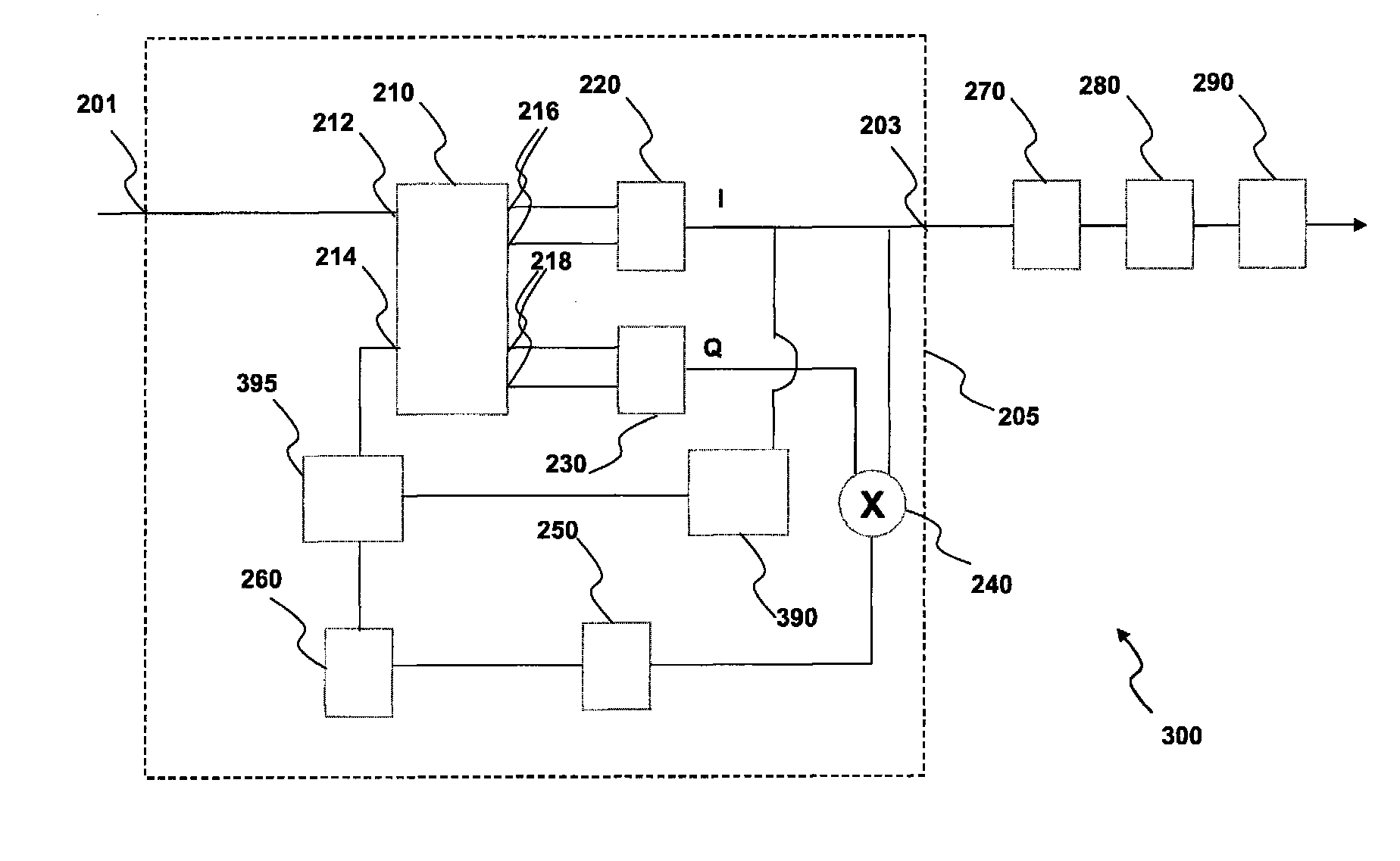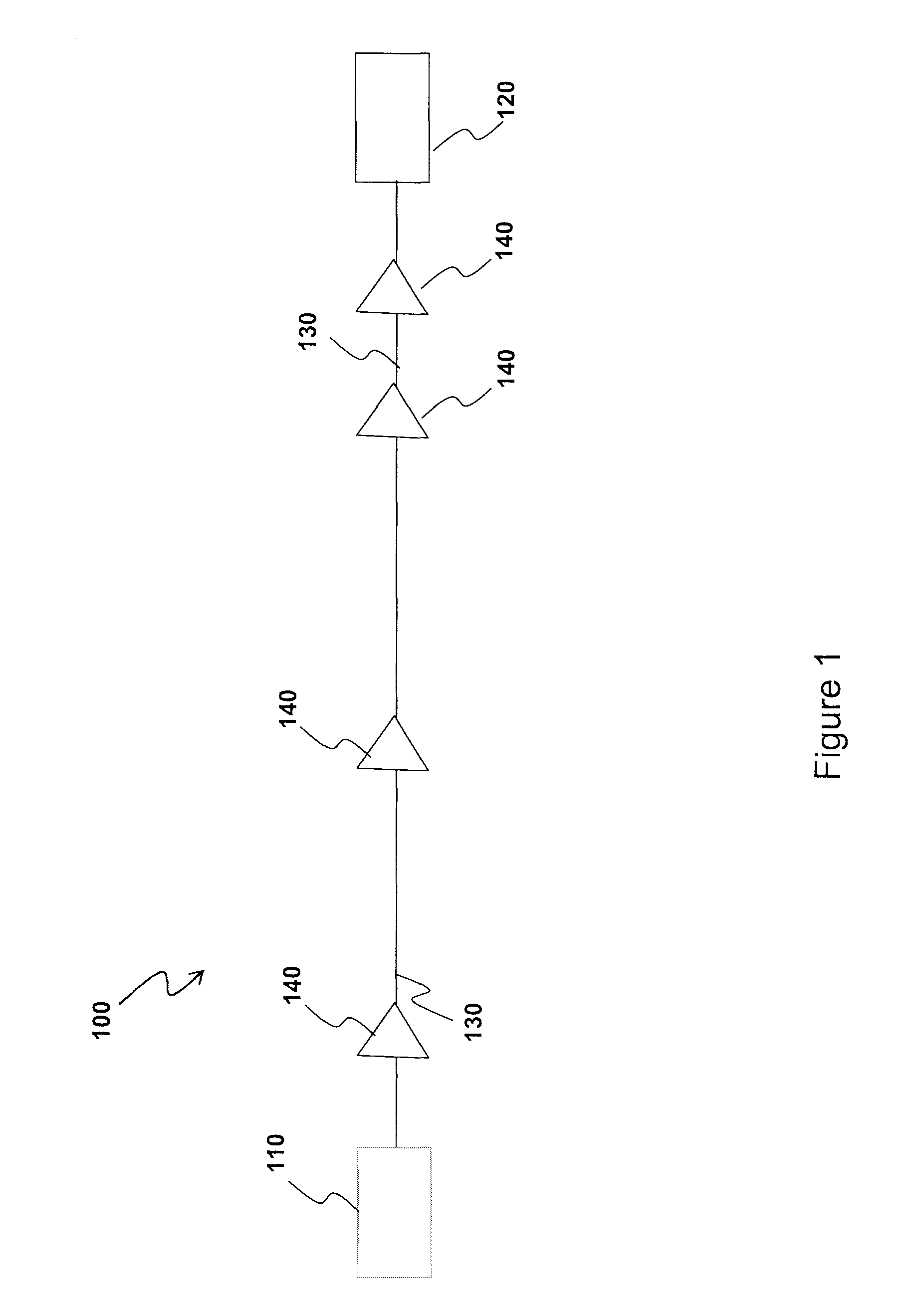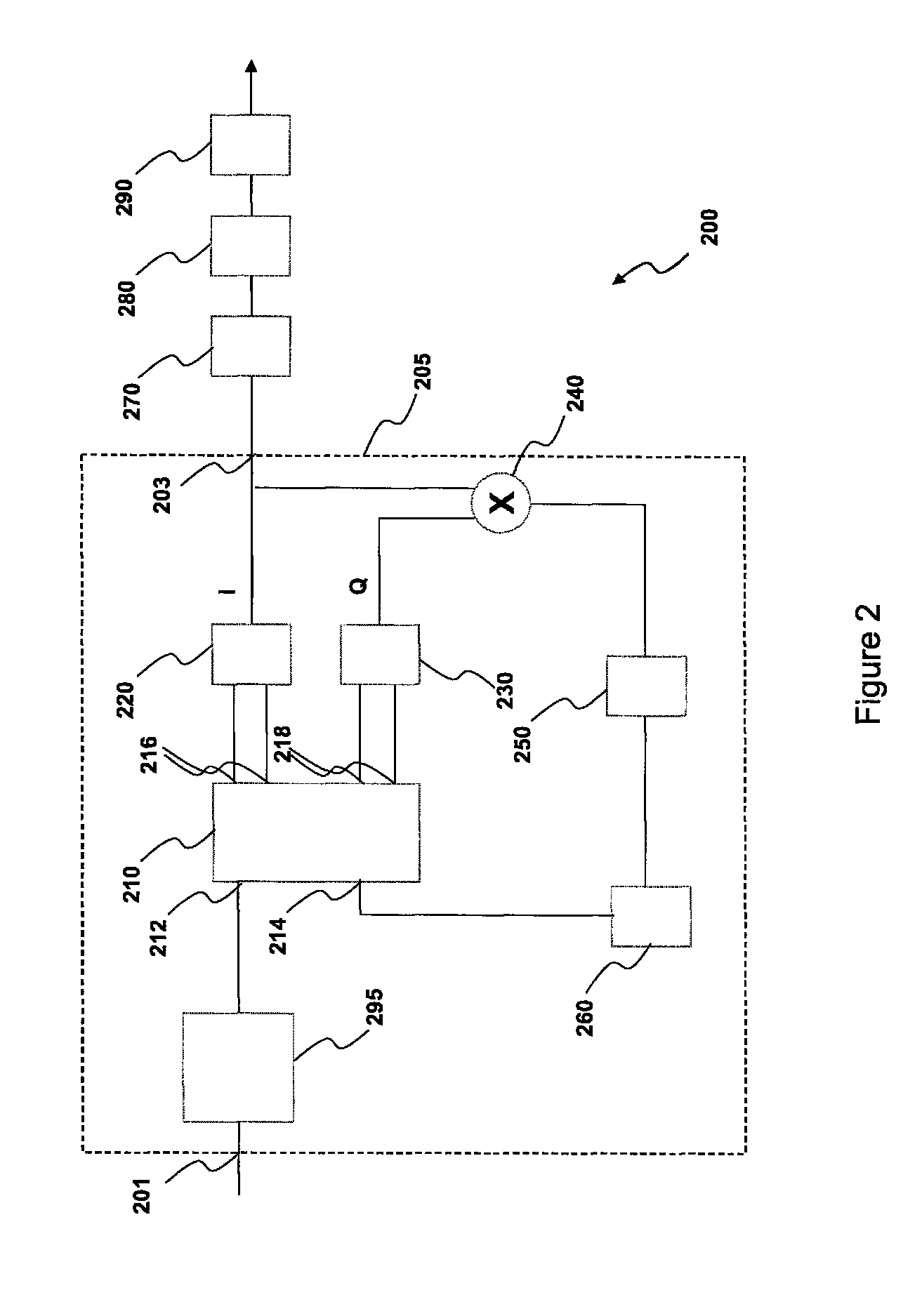System and method for coherent detection of optical signals
a technology of optical signals and coherent detection, applied in the field of dpsk optical communication systems, can solve the problems of not providing the desired robustness of the dispersion accumulated by dpsk optical signals
- Summary
- Abstract
- Description
- Claims
- Application Information
AI Technical Summary
Benefits of technology
Problems solved by technology
Method used
Image
Examples
first embodiment
[0095]FIG. 2 shows a schematic diagram of an optical receiving system 200 in accordance with the present invention. The optical receiving system 200 is comprised within the end apparatus 120 of FIG. 1.
[0096]The optical receiving system 200 comprises a coherent optical receiving device 205 based on a homodyne coherent receiving architecture with Costas optical phase locked loop (OPLL). The device 205 has an optical input port 201 optically connectable to the optical link 130 and an electric output port 203.
[0097]The coherent optical receiving device 205 comprises an optical hybrid 210 having a first input port 212 optically connected to the input port 201 and a second input port 214 optically connected to a local oscillator 260. The optical hybrid 210 further has a first pair of output ports 216 optically connected to a first differential photodetector 220 for outputting in-phase components (0° and 180°) of the optical signal with respect to the local oscillator and a second pair of ...
second embodiment
[0126]FIG. 9 shows a schematic diagram of an optical receiving system 900 in accordance with the present invention.
[0127]The optical receiving system 900 comprises a heterodyne coherent optical receiving device 905 based on a heterodyne coherent receiving architecture. The receiving device 905 having an optical input port 901 optically connectable to the optical link 130 and an electric output port 903.
[0128]The coherent optical receiving device 905 comprises an optical hybrid 910 having a first input port 912 optically connected to the input port 901 and a second input port 914 optically connected to a local oscillator 260. The optical hybrid 910 further has a first output port 916 optically connected to a first input of a differential photodetector 920 and a second output port 918 optically connected to a second input of the differential photodetector 920, for outputting both in-phase (0° and 180°) components of the optical signal with respect to the local oscillator. The optical ...
third embodiment
[0146]FIG. 12 shows a schematic diagram of an optical receiving system 1200 in accordance with the present invention. The optical receiving system 1200 is comprised within the end apparatus 120 of FIG. 1. The optical receiving system 1200 comprises a phase diversity coherent optical receiving device 1205 having an optical input port 1201 optically connectable to the optical link 130 and a first and a second electric output port 1203, 1204.
[0147]The coherent optical receiving device 1205 comprises an optical hybrid 210, a local oscillator 260, a first and a second differential photodetector 220, 230 as shown and described with reference to FIG. 2. In an alternative configuration (not shown), the first and second photodetector 220 and 230 are single-input photodetector with AC output each one coupled to one output port of, respectively, the first and second pair of output ports 216 and 218, as described above.
[0148]In a still further alternative configuration, the optical hybrid 210 m...
PUM
 Login to View More
Login to View More Abstract
Description
Claims
Application Information
 Login to View More
Login to View More - R&D
- Intellectual Property
- Life Sciences
- Materials
- Tech Scout
- Unparalleled Data Quality
- Higher Quality Content
- 60% Fewer Hallucinations
Browse by: Latest US Patents, China's latest patents, Technical Efficacy Thesaurus, Application Domain, Technology Topic, Popular Technical Reports.
© 2025 PatSnap. All rights reserved.Legal|Privacy policy|Modern Slavery Act Transparency Statement|Sitemap|About US| Contact US: help@patsnap.com



